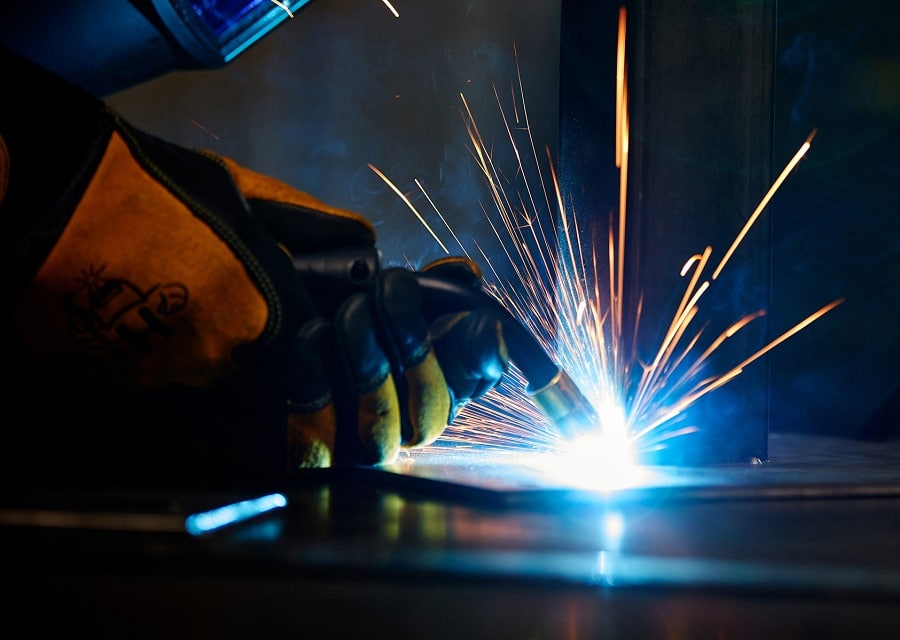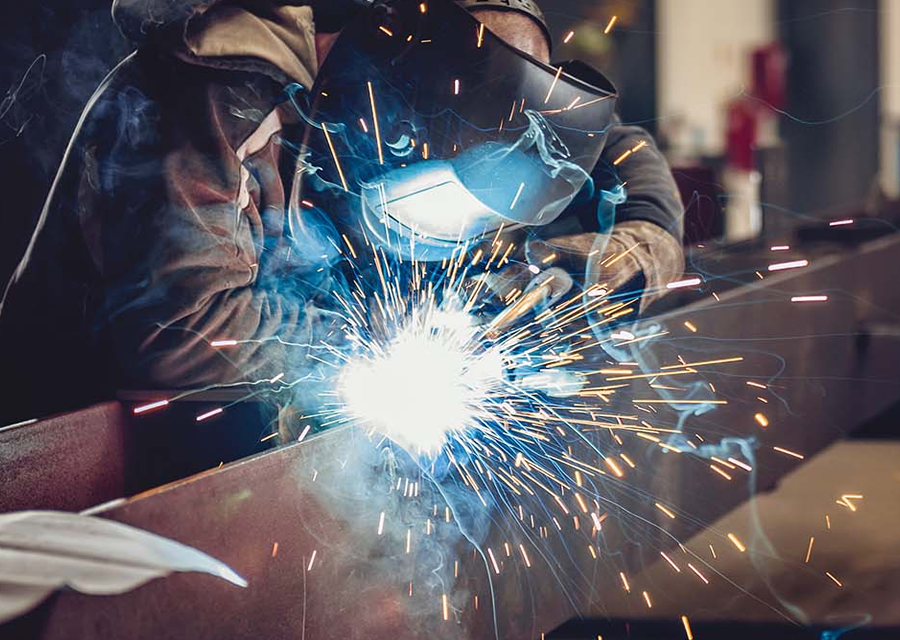What is the first thing you consider when choosing a welding helmet Trusted Source Welding helmet - Wikipedia A welding helmet is a type of headgear used when performing certain types of welding to protect the eyes, face and neck from flash burn, ultraviolet light, sparks, infrared light, and heat. en.wikipedia.org ? Unless you are a beginner, or you are using a welding technique that doesn’t involve the creation of lights, sparks, and all that is associated with welding, then you will certainly consider the darkening feature on the helmet. There are different types of welding helmets on the market, and auto-darkening welding helmets are just one of the different types. How do auto-darkening welding helmets work? What features should you consider before you buy one? These questions and more are what we are going to consider in this article.
Welding, which involves fusing metal in the presence of high pressure and/or heat, can be a risky process if you don’t have the right equipment and take the best safety precautions. If you are not careful, flying sparks, bright light from torches, and other things can cause problems. They can lead to cornea damage and other types of eye problems. Read on to find out more!
Most experts you meet will tell you that the welding helmet is the most important piece of protective equipment that you can have. There are different types of helmets when it comes to welding. First, there are the passive lens helmets and then there are the auto-darkening options.
The passive welding helmet comes with a lens of glass coated with IR and UV protection and is used for general welding. On the other hand, auto-darkening helmets are options that will change instantly when they sense light.
No wonder then that auto-darkening helmets are the helmets of choice for experts. While they are more expensive than the other type of helmets, they offer more protection. They serve other advantages as well. For instance, they change back to being clear when in natural light, which allows you to see the outcome of your welding without having to remove your helmet.
As the name implies, these are helmets that feature a glass lens that will automatically darken when exposed to bright welding lights. It is considered to be the best type of welding helmet because of the build and the technology that lets you work with minimal distractions. If you are looking to weld effectively, then you should consider these helmets.
They can do this because they use auto-darkening filter lenses. These lenses are a type of LCD and are similar to what you find in devices that have displays like your TV, digital clocks, and similar machines.
The auto-darkening helmet is excellent and comes with numerous advantages.
It will ensure that your work faster than if you were wearing a regular type of helmet. The darkening feature will come on when there is an arc and will allow you to see clearly through the lens when you aren’t welding, thus, allowing you to see your work without removing the helmet. This certainly makes your work more comfortable.
Now that we know the basic principles that guide the application of the darkening feature, let’s now see the components that are responsible for the technology.
First, these helmets come with lenses that have UV and/or IR filters. The ultraviolet protection and infrared filters are what protect the welder from infrared and UV rays. These are activated at all times, whether in the presence of light or not.
In most cases, the filter is composed of a thin glass layer with metallic layers. It is made of silver and aluminum oxide.
As these are metallic layers, they are particularly effective at eliminating IR radiation. Also, since welding is done in the presence of heat, this filter will protect the crystal panel from melting. As for UV radiation, the filter combines the metallic and polarization filters to keep you safe from that sort of radiation.
To ensure optimal protection from UV rays, there must be metallic layers and polarization filters.
Another thing used in the auto-darkening helmet is the polarization filter. There is a trio of polarization filters in these helmets.
These are designed to support every layer of protection. So, each of these filters combines to reduce the intensity of light from the welding arc.
It has been observed that the polarization filter that is set after the UV and IR filter is perpendicular. Due to this angle, you get the darkest view.
While the polarizing filters are arranged after the layers of the IR and UV filters, the liquid crystal cells are designed between these polarizing filters. When powered ON, they can help to refract light. Due to the addition of these cells, you can determine the way the filters will darken and reflect the light from the arc.
The next important part of these helmets is the arc and light sensors. These two sensors are important because, without them, your helmet would be unable to recognized dangerous light that requires a darkening of the lenses. You will find several light and arc sensors in a helmet.
The light sensors are the components that filter out extra light from your welding. As for the sensors, they are designed to cope with the bright lights from the arcs.
Before you begin your welding, the helmet needs to be switched ON. At the initial stage, these helmets begin with shade three, going higher depending on the demand or the brightness of the arc.
Two major things further strengthen the case for these helmets. One of these is the sensitivity controls. These controls are what makes it comfortable to use the helmet without needing to pull it off to check your work. Another reason why these helmets are so highly recommended is that you don’t have to do the work of adjusting the lens yourself as you work. However, it is necessary to point out that not all eyes can adjust to the intensity of light similarly.
Some might be better at coping with bright lights, while others are not as strong. Thus, it is a good thing that these helmets are not one-size-fits-all. You can change the setting to the level of darkening that you want.
Another nice thing about these helmets is the delay control. What is this?
The delay control, as you might have inferred from the name, is how you will determine the length of time the lens will remain darkened after the arc stops.
For many of the best helmets, you can choose the delay settings. If your work involves short processes, you will need shorter delay times. For longer processes, you might set the timer for a longer time. The importance is that it will give your eyes the chance to adjust to the intensity of the light.
Yes, these helmets are safe to use. When used in the right way, they are even safer than passive welding helmets. You don’t need to take them on and off, which makes your work more enjoyable and helps you to focus on the task at hand. It also reduces the chances of making mistakes and sustaining injuries.
Before you buy the helmet, we recommend that you test for the fit and the auto-darkening feature. If you are buying it online, it is prudent to consider reviews from others that have used the helmet. Before using, check out the batteries, the lens, the shade, and the safety standards.
Before you settle on the auto-darkening helmet to use, there are certain features that you should consider. Here we will consider each of these important features.
To get the best from your welding, there must be a sufficient viewing area. It should have the coverage needed to see what you are working on without having to turn your head a lot. We recommend that you go for helmets with full viewing areas. Lincoln K3034-4 is regarded as one of the welding helmets with an excellent viewing area.
The placement of the controls should be functional. Some helmets have controls inside the helmet, while others have controls outside. You should opt for models that are easy to access.
This is a vital feature because, without it, there is no point getting the auto-darkening helmet. If the light sensors are not working or good enough, then it will not identify the arc, which defeats the entire purpose of this time of helmet. One of the helmets recommended by most users is the YESWELDER welding helmet.
The passive and auto-darkening welding helmets are important to have when welding. We recommend that you select an auto-darkening welding helmet. Although it might be more expensive, the benefits and safety outweigh the cost of purchase. You might ask, ‘how do auto-darkening welding helmets work?’, and we hope that we have provided you with sufficient information in this article.





